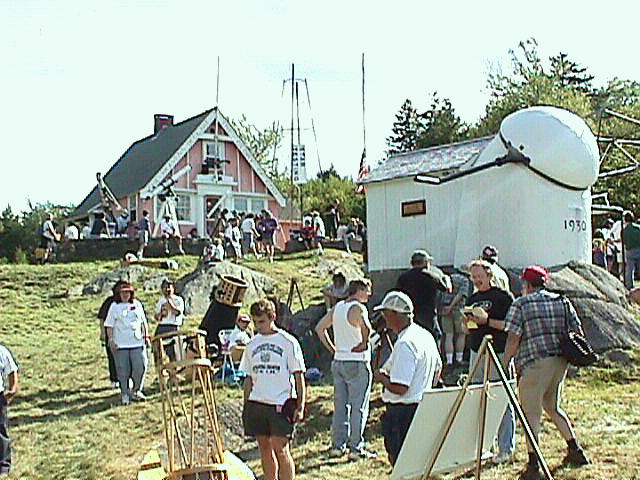Stellafane is the oldest annual star party in the US and probably the world. The group, later to become The Springfield Telescope Makers, was started August 17th, 1920 with a mirror making class taught by Russell W. Porter at the Jones and Lamson Machine Company, a machine manufacturer in Springfield, Vermont. Signs were put up a week or two prior to the meeting inviting everyone to attend. Fifteen men and one woman joined the class, all but one man finished.
After several of the students had completed their scopes, Porter and the rest started making night trips into the mountains surrounding Springfield including Hawks Mountain and Ascutney. Eventually, the group got tired of lugging equipment and started looking for a permanent place build a clubhouse and observatory. Porter had inherited some land on top of Breezy Hill just south of Springfield. He leased it to the club in the early 20's and later sold it to the group for one dollar.
Porter and James Hartness contributed a considerable amount of cash to pay for the materials to build the clubhouse. Every member contributed sweat and labor to the project. After completion, the group was running low on funds but needed to put some paint on the building. They talked a local merchant into donating some paint, but he had the condition that he chose the color. It ended up being pink, and the clubhouse has been pink ever since.
In November of 1925, Scientific American magazine published an article describing the group and the equipment they had made. Letters came pouring in from all over the country asking for more information on how to build a telescope. The magazine hired Porter to write and illustrate two articles on the basics of mirror making and telescope design. In the Late 20's these were reprinted along with other articles in book form with the title "Amateur Telescope Making". In the 50's this became volume one of a three volume set on everything you need to know about telescope making as "Amateur Telescope Making I, II, III".
Now, every year, in late July or early August, there is a convention of telescope makers from around the world to show off their work and to rub elbows with famous amateur and professional astronomers.
This year's convention, held July 24 and 25, was fantastic. The weather was beautiful from start to finish, and the telescopes showed more variation and imagination than I'd seen in years. David Levy gave the Shadowgram, a Stellafane tradition which has been missing the last several years, it was nice to have it back. He did a great job in stirring the past and looking to the future.
But enough talk, let's see some scopes...
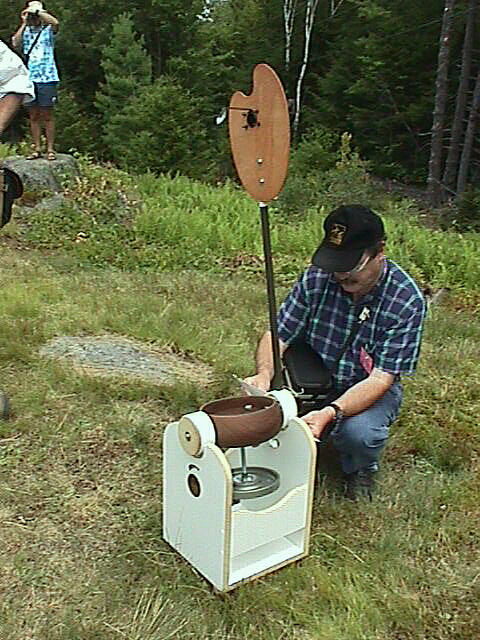
This is the salad bowl telescope. A wooden bowl was used to hold the main mirror, and a palette to hold the secondary and focuser. The guy examining the scope is a writer for "Sky and Telescope" magazine.
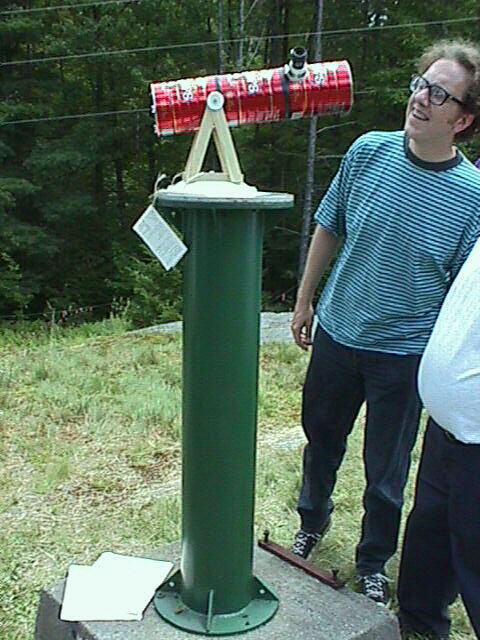
A telescope made out of Folger's coffee cans.
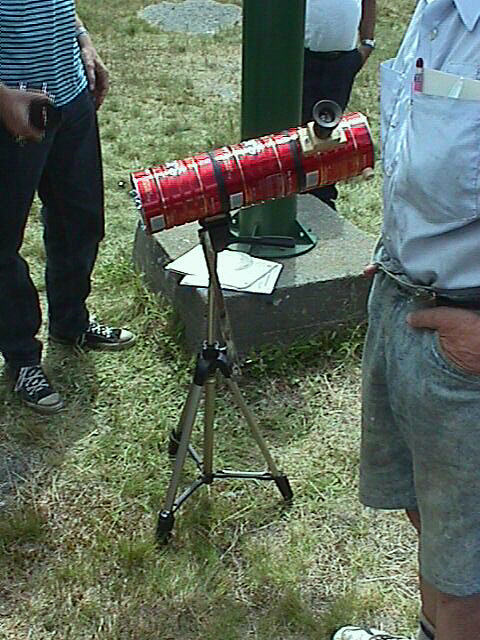
A second telescope made out of Folger's coffee cans.
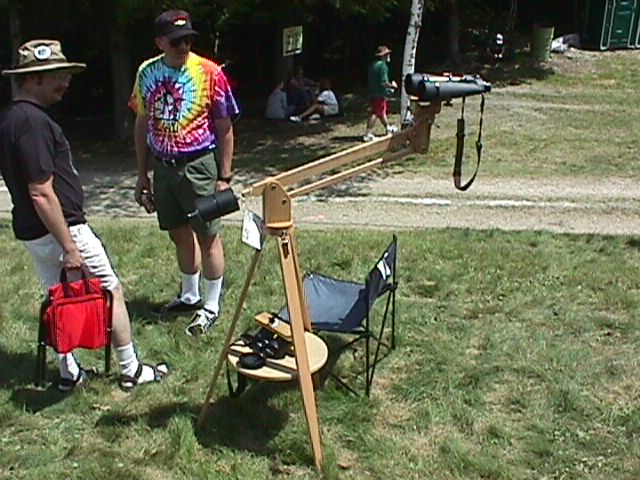
A wooden binocular mount

The most unique telescope at Stellafane this year has to be this one made by Bob Carruthers of Wallingford, CT. It was dubbed the "Ballsonian" by a friend of mine, Bob hasn't officially assigned it a type yet. It's name is the "Star Catcher" and it's made from two buckets, one holding the main mirror, the other holds the secondary.
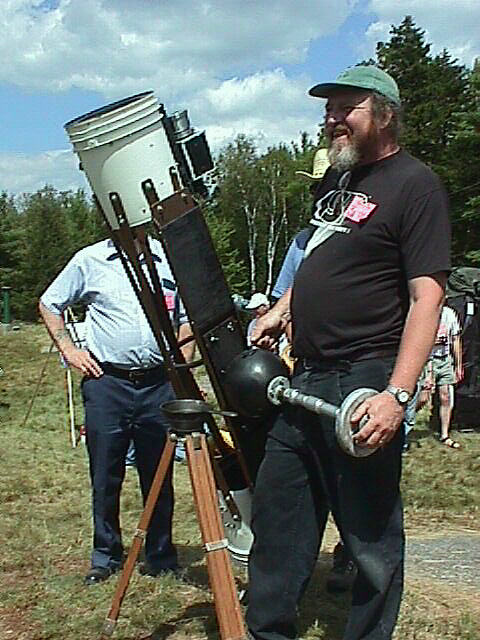
It seems to be pretty portable.
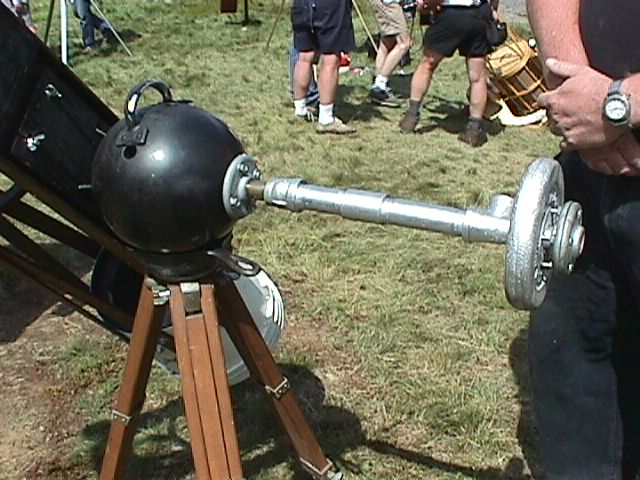
As you can see, the mount is a bowling ball which sits atop a frying pan. To lube it up for better motion, Bob uses mazolla corn oil. One application lasts for months.
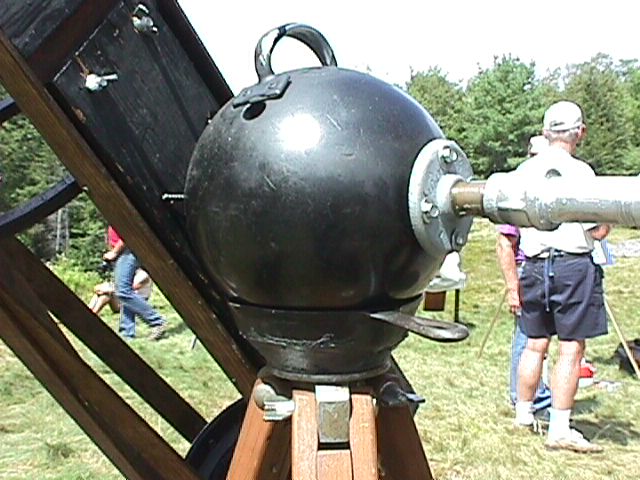
Bob said he went down to the local bowling alley and asked if they had a bowling ball they could give him. The owner asked "what for?" and Bob replied, "I'm making a telescope" and the owner looked at him funny and then Bob said "I already have the buckets and the frying pan", the owner gave him the ball.
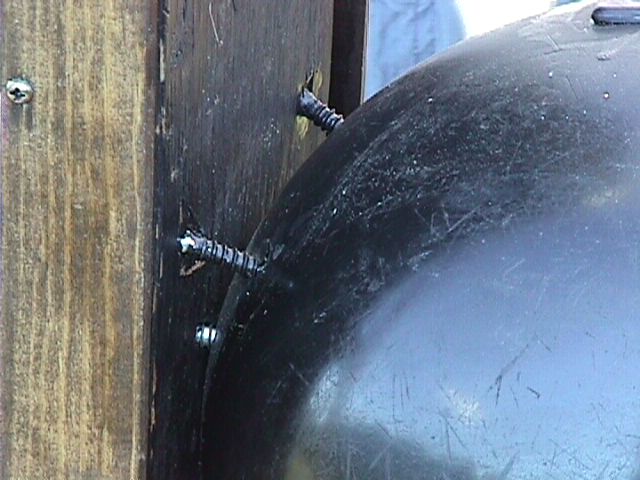
I figured a bowling ball would shatter if you tried to screw into it, but Bob had no problems. Once you get through the first layer, the core is compressed wood and cork.
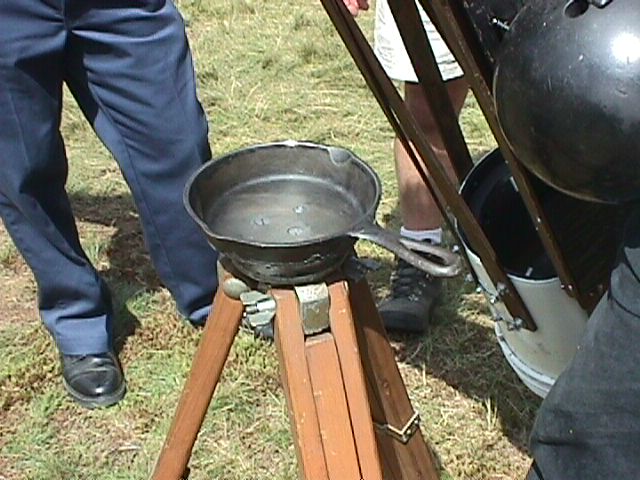
The fry pan mount, looks like a griswald. Bob said a tin can works just as well. That's what he uses on his permanent mount at home.
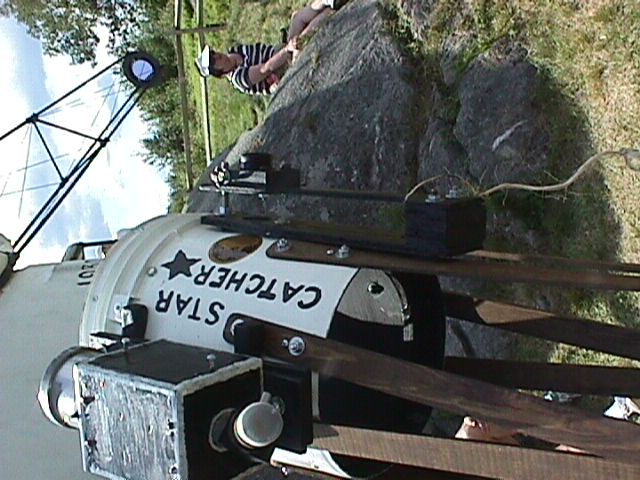
The Star Catcher's unique focuser and finder.
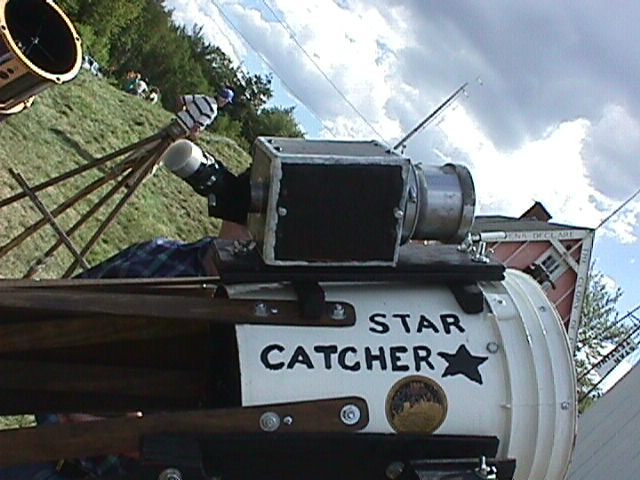
The finder is an old view camera lens mounted on an empty box with a 45 degree prism and eyepiece at the back end. The prism provides an upright image and makes it easier for viewing near the zenith. The eyepiece has guitar strings for cross hairs.
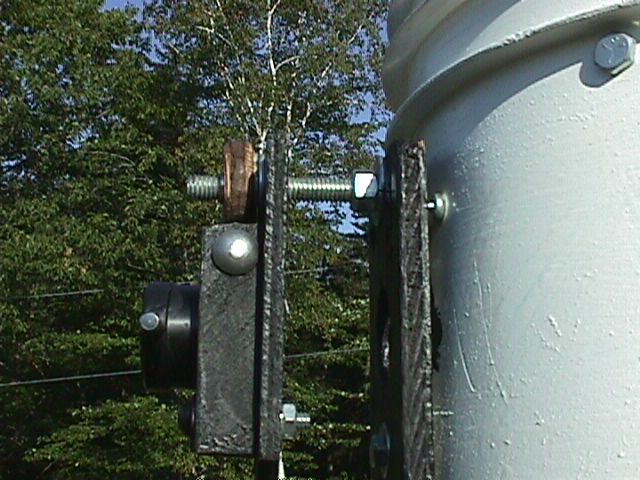
Bob gets the focusing close by moving the eyepiece in it's holder, then he can fine focus using the wooden nut. The eyepiece holder is mounted on a cantilever. Turning the nut, moves the cantilever arm closer or farther away from the scope.
Unfortunately, his scope didn't win an official award at Stellafane (at least I didn't see it). I think Russell Porter would have been proud. This is definately a telescope anyone can afford and it's made out of materials at hand, which he was the master of. It wins the Ron and Mary Award for most creative use of materials and resourcefulness of its creator. Bob, my hat is off to you.
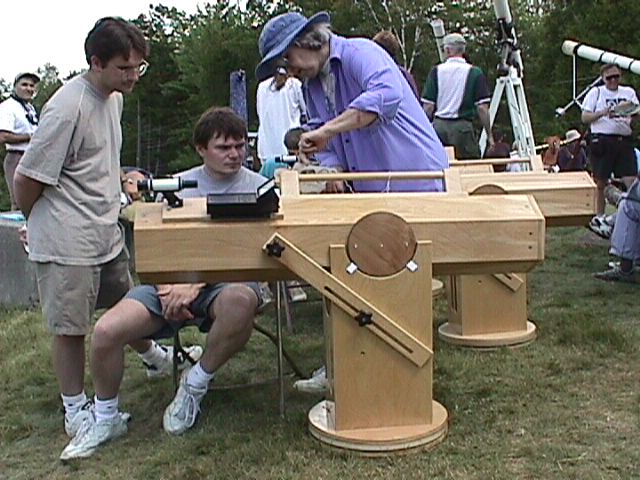
I'm not sure who brought these scopes, but they were a big hit. There were three identical scopes, each having a mirror of different quality. One with a primary mirror ground to 1/2 wave, one to 1/4 wave, and one to 1/10 wave.
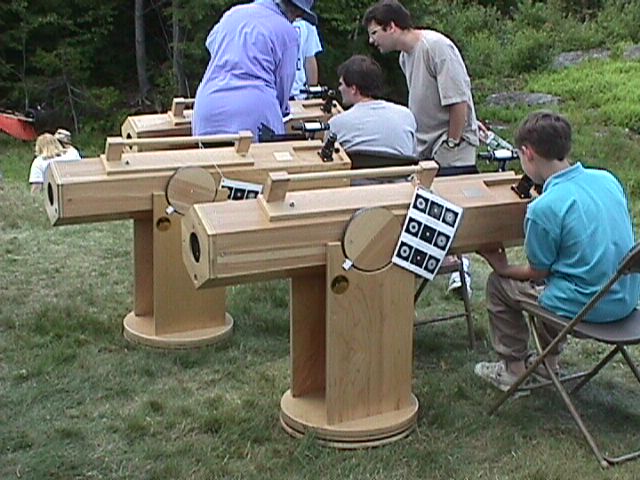
The difference in image quality was obvious from scope to scope.
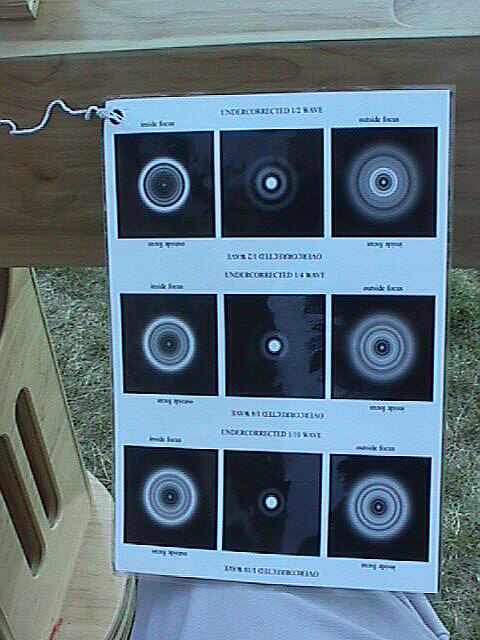
They also had a sheet showing how the star test varies from scope to scope.
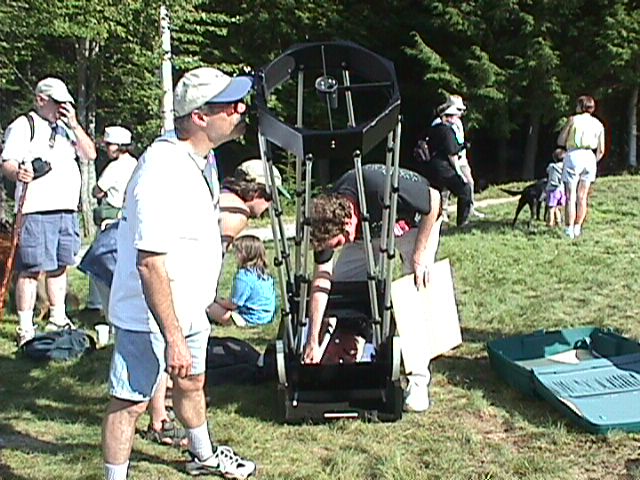
This telescope comes apart and folds up into the suitcase on the right and a box about the size of 2'x3'x1'. It's pretty impressive when you can pack a 16" telescope into two packages that size. The support poles are actually monopoles used in photography, which were modified for telescope use. They collapse with the flick of a lever.
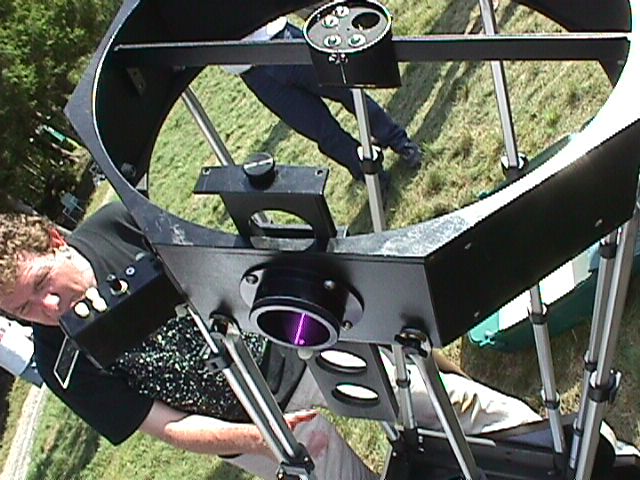
The telescope had another inovative feature, a filter slide.
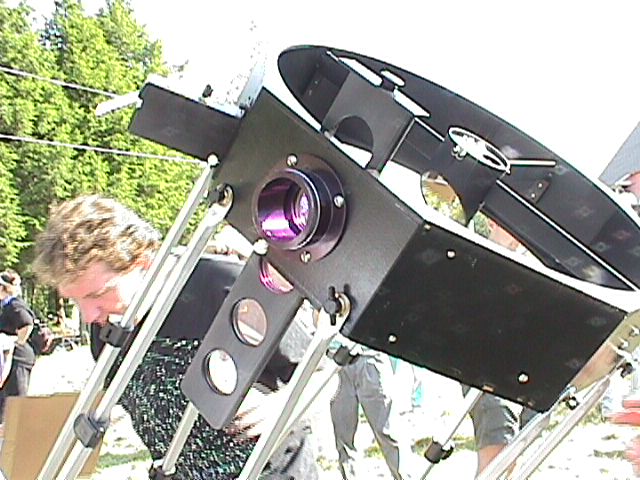
As one who is always fiddling with filters, I found this idea particularly interesting. Also in the picture, you can see the electronic box 1/4 turn screws used to hold the support rods in place. They keep setup time to a minimum.

This telescope had a pretty cool mount. A lattice of circular boards on the bottom ride on a ring base. The telescope can be pointed anywhere without being inhibited by the mount.
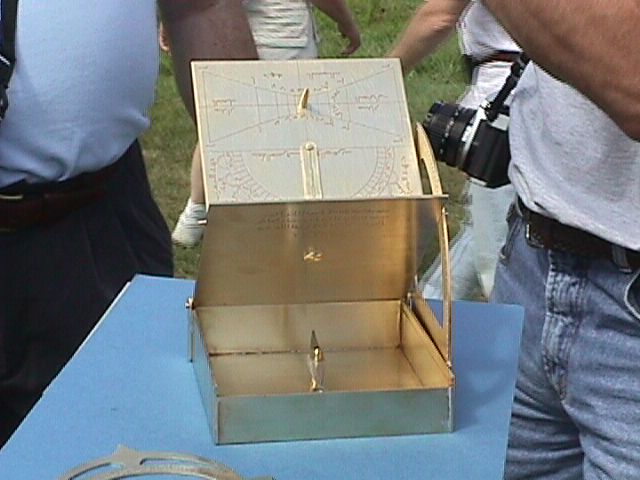
This sundial was built to plans from an ancient middle eastern manuscript.
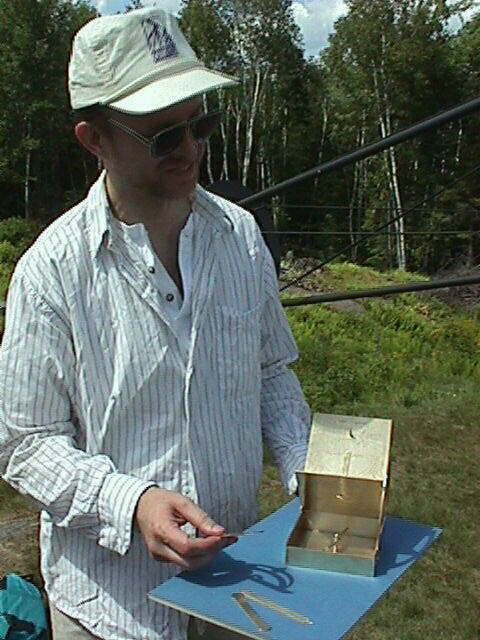
It's purpose was to tell the user when to pray as well as which way to face, no matter where on the globe he/she happened to be.
More to come as time permits...
Return to Main Page 
This page hosted by  Get your own Free Home Page
Get your own Free Home Page


